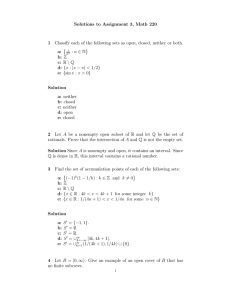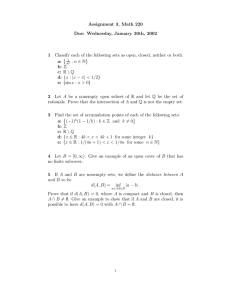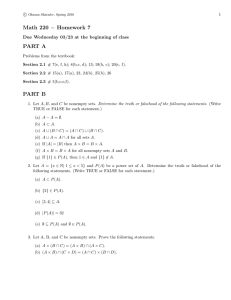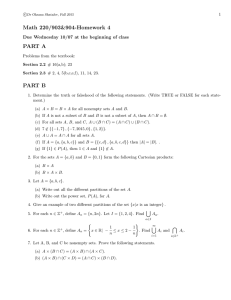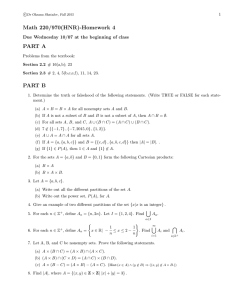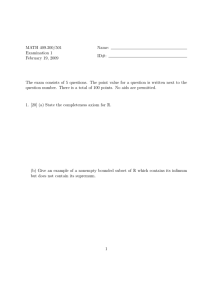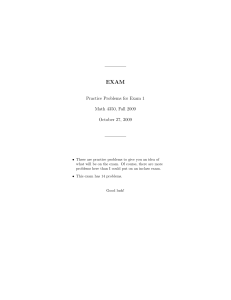Solutions to Self-Scheduled Part of Math 317 Exam #2
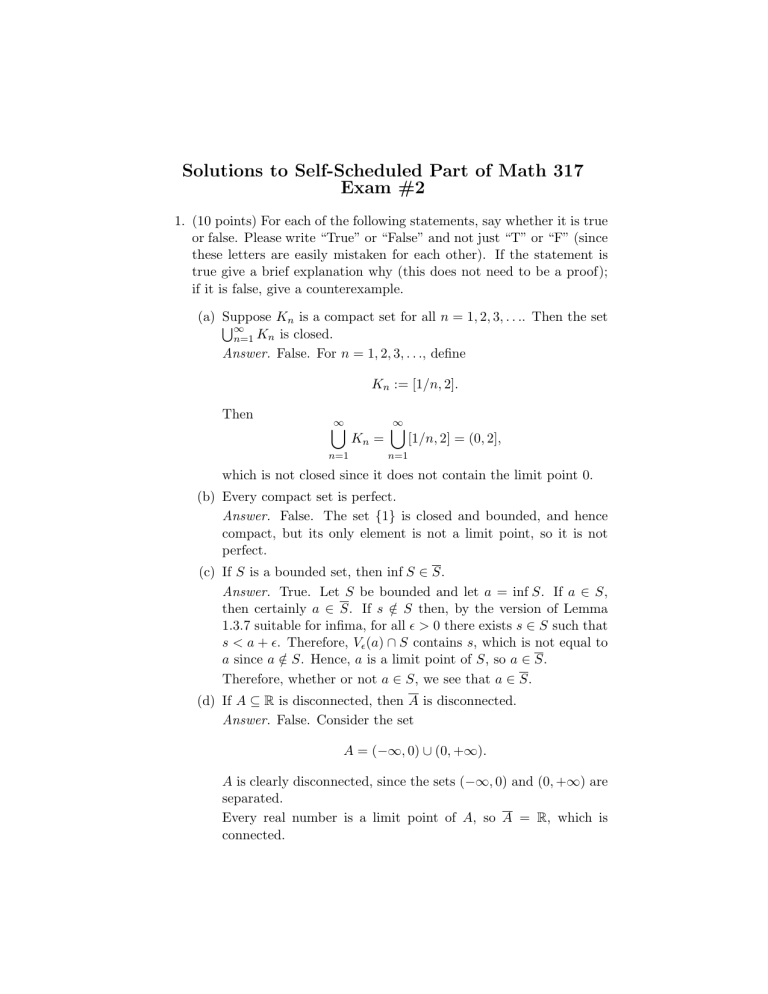
Solutions to Self-Scheduled Part of Math 317
Exam #2
1. (10 points) For each of the following statements, say whether it is true or false. Please write “True” or “False” and not just “T” or “F” (since these letters are easily mistaken for each other). If the statement is true give a brief explanation why (this does not need to be a proof); if it is false, give a counterexample.
(a) Suppose K n
S
∞ n =1
K n is a compact set for all is closed.
n = 1 , 2 , 3 , . . .
. Then the set
Answer.
False. For n = 1 , 2 , 3 , . . .
, define
K n
:= [1 /n, 2] .
Then
∞
[
K n
= n =1
∞
[ n =1
[1 /n, 2] = (0 , 2] , which is not closed since it does not contain the limit point 0.
(b) Every compact set is perfect.
Answer.
False. The set { 1 } is closed and bounded, and hence compact, but its only element is not a limit point, so it is not perfect.
(c) If S is a bounded set, then inf S ∈ S .
Answer.
True. Let S be bounded and let a = inf S . If a ∈ S , then certainly a ∈ S . If s / S then, by the version of Lemma
1.3.7 suitable for infima, for all > 0 there exists s ∈ S such that s < a + . Therefore, V ( a ) ∩ S contains s , which is not equal to a since a / S . Hence, a is a limit point of S , so a ∈ S .
Therefore, whether or not a ∈ S , we see that a ∈ S .
(d) If A ⊆
R is disconnected, then A is disconnected.
Answer.
False. Consider the set
A = ( −∞ , 0) ∪ (0 , + ∞ ) .
A is clearly disconnected, since the sets ( −∞ , 0) and (0 , + ∞ ) are separated.
Every real number is a limit point of A , so A =
R
, which is connected.
(e) If a set A ⊆
R consists entirely of isolated points, then A is finite.
Answer.
False. The set
Z of integers consists entirely of isolated points but is infinite.
2. (6 points) Give examples of each of the following, or explain why no such example exists (this explanation does not need to be a proof, but you should give a cogent explanation).
(a) An open set A ⊆
R such that A is not perfect.
Answer.
No such example exists. Let A be an open set and let a ∈ A (if A = ∅ , then A = ∅ , which is trivially perfect). Since
A is open, there exists > 0 such that V ( a ) ⊆ A , so a is not an isolated point. Since our choice of a was arbitrary, we see that A contains no isolated points.
Now, if x ∈ A \ A , then x is a limit point of A , meaning that, for any > 0, V ( x ) ∩ A = ∅ . Since A ⊆ A , this means that V ( x ) ∩ A is not { x } or the empty set, meaning that x is not an isolated point.
Therefore, we see that no element of A is an isolated point, so A is perfect. Since our choice of open set A was arbitrary, we see that for any open set A , the closure A is perfect.
(b) A nonempty finite set which is connected.
Answer.
The singleton set { 1 } is both finite and connected.
(c) A connected, nonempty set A ⊆
R such that A c and nonempty.
is also connected
Answer.
Let A = ( −∞ , 0), which is nonempty and connected.
Then A c
= [0 , + ∞ ), which is also nonempty and connected.
3. (4 points) Show, using the definition of functional limits, that lim x → c x
3 c
=
3 for every c ∈
R
.
Proof.
Let c ∈
R and let > 0.
Then for any x ∈
R such that
0 < | x − c | < 3 , we have that x
−
3 c
3
=
| x − c |
3
<
3
3
= .
Since our choice of > 0 was arbitrary, we conclude that lim x → c x
3
= c
3
.
